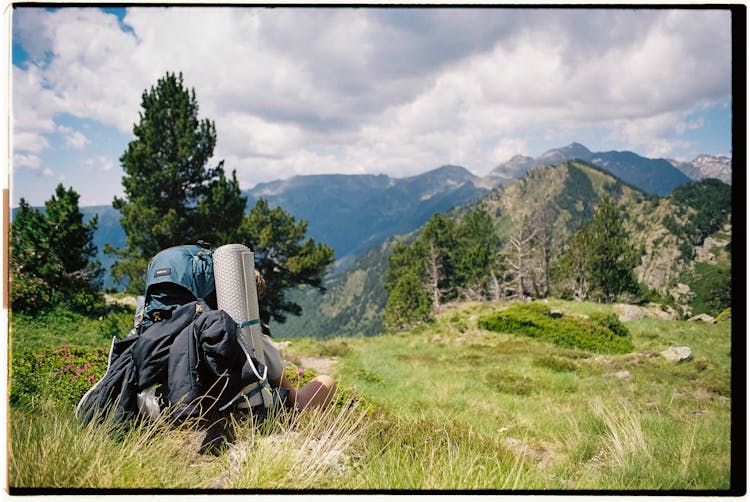All Categories
Featured
Important Mountain Hiking Safety Tips
TLDR Summary- 🌲 Plan your hike and notify someone of your route.
- 💪 Know your limits and choose trails that suit your abilities.
- ☀️ Prepare for any weather changes and have the right gear.
- 🔦 Always carry the 10 Essentials for emergencies.
- 🚑 Be ready for emergencies and have a communication plan.
Before embarking on any mountain trail adventure, it's essential to prioritize safety through careful planning. Planning your hike involves mapping out your route in advance, which not only increases your chances of enjoying a successful trek but also helps you avoid unexpected pitfalls. Notify a friend or family member of your itinerary, including the trail you will take, your expected return time, and any potential hazards you may encounter. This simple gesture can provide peace of mind for both you and your loved ones while ensuring that someone knows your whereabouts. You can explore detailed hiking routes at this resource.
It's equally crucial to be honest about your physical limitations. Assess your fitness level and only choose trails that match your capabilities. Every hiker has different strengths, so don't hesitate to acknowledge your experience level and the weight you can comfortably carry. Additionally, be mindful of any medical conditions that might impact your performance on challenging terrains. Remember, the ideal hike is one where you can enjoy the scenery without overexerting yourself.
When venturing into the mountains, weather can change unexpectedly, complicating your journey. Therefore, always check the weather forecast and consult with local park rangers for potential hazards. Be prepared for a range of scenarios, including thunderstorms, sudden temperature drops, or even unexpected downpours. During inclement weather, particularly lightning, avoid high and open areas to stay safe. In circumstances of rain, muddy trails become slippery and treacherous, elevating the risk of injury. Stay informed and equipped by visiting this hiking guide that offers tips for safe hiking.
As part of your preparation, always pack the essentials before setting out into the wilderness. The 10 Essentials that every hiker should carry include a first aid kit, navigation tools, sun protection, insulation layers, reliable illumination, fire starters, a repair kit, sufficient nutritional snacks, hydration sources, and emergency shelter options. Ensuring that you have these items can significantly reduce risks associated with unexpected situations. For navigation, consider having a reliable map, such as the Great Smoky Mountains National Park Map to keep you on path.
Moreover, it’s vital to protect yourself while hiking. Applying sunscreen with an SPF of at least 30 protects against harmful UV rays. Sunglasses and a wide-brimmed hat also offer additional shielding from sun exposure. Staying hydrated is key, and you should drink plenty of water before, during, and after your hike. Steer clear of caffeine and alcohol, as they can lead to dehydration. Taking frequent breaks in shaded areas helps you maintain your energy levels and minimize heat illness, especially during the hotter months.
When on the trail, staying safe involves a few key practices. Always stick to marked trails to minimize stress on the environment and prevent disorientation. Rapid waters and slippery slopes can pose serious risks, so be cautious around those areas, particularly near cliffs or ledges. It's also wise to use bug repellents to ward off insects and regularly check yourself for ticks and mosquitoes, particularly if you’re in dense vegetation.
Emergencies can arise at any moment while hiking, so preparedness is crucial. Leave a detailed plan with someone who is not accompanying you on your hike; this documentation should include your expected route and estimated return time. Consider carrying a cell phone for emergencies, and ensure that you know how to navigate using a compass as well. In the event that you need to call for help, being able to provide clear, concise information to rescue teams can make a difference.
The more prepared you are for the unexpected, the safer your hiking experience will be. Whether you’re a novice hiker or a seasoned trekker, taking these precautions should always be part of your hiking routine. Furthermore, if you’re looking for some trusted resources that support your safety on trails, blogs like Happy Trails: Pro Tips for Hiking Safety can be a great addition to your itinerary.
As you set out on your mountain trails, keep in mind that diligence and preparation are your best allies in ensuring a safe and enjoyable adventure. Early assessment of your capabilities, weather reconnaissance, and an essential gear checklist will allow you to focus on the beauty of the outdoors, rather than the obstacles. Providing ample communication to loved ones and remaining vigilant on the trails completes your hiking toolkit for safety.
For those passionate about hiking mountain trails, the value of well-planned excursions cannot be overstated. The risks associated with hiking can be mitigated through knowledge, preparation, and awareness, transforming potentially hazardous activities into enjoyable bonds with nature. Further guidance, like the 22 Essential Hiking Safety Tips to Avoid Mishaps on the Trail, can provide you with additional insights to enhance your hiking knowledge and experience.
Key Takeaways
- 🌲 Prior planning can save lives on the trail.
- 💪 Know your strengths and limitations before hiking.
- ☀️ Always prepare for the weather and pack the right gear.
- 🔦 Emergency preparedness is essential for every hiker.
- 🚑 Communication and awareness can enhance safety while hiking.

Latest Posts
Top-Rated Roofers in El Centro CA: Your Ultimate Guide
Master the Art of Tile Shower Cleaning
LEGO Hogwarts Castle: Crafting the Wizarding World in Bricks